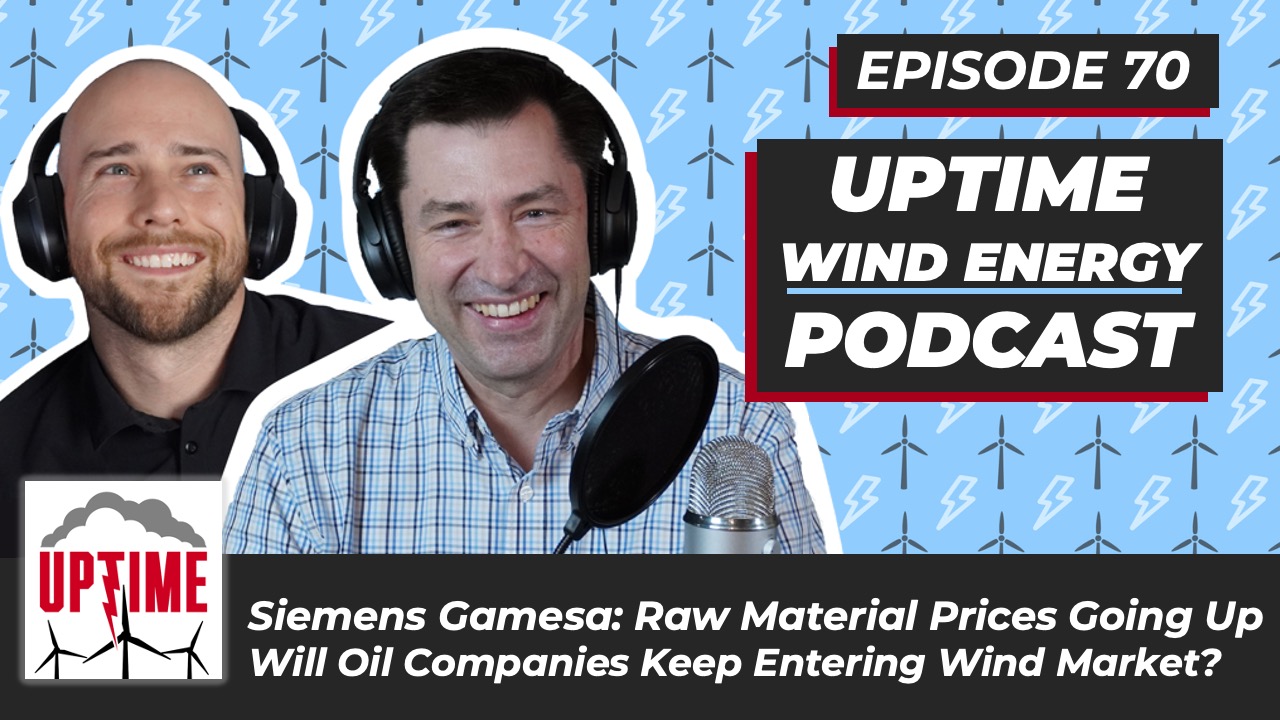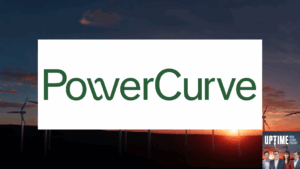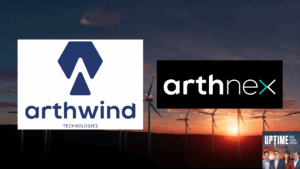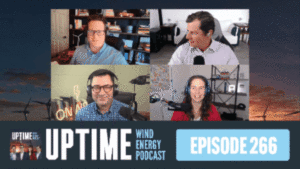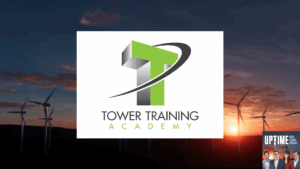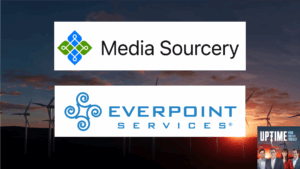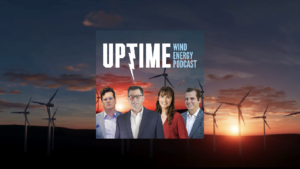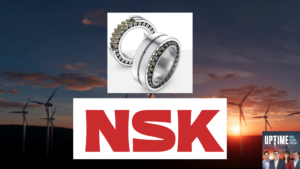Companies like BP and Shell are now involved in wind farm projects – this seems like a win for the planet, right? Siemens Gamesa reveals high raw material costs that have caused it to change financial guidance – is this a big deal? Plus, Allen Hall gives his engineering insight into overbuilding structures, and whether digital twin technology can truly help solve the problem of not wasting money on overbuilt structures or machines.
Sign up now for Uptime Tech News, our weekly email update on all things wind technology. This episode is sponsored by Weather Guard Lightning tech. Learn more about Weather Guard’s StrikeTape Wind Turbine LPS retrofit. Follow the show on Facebook, YouTube, Twitter, Linkedin and visit Weather Guard on the web. Have a question we can answer on the show? Email us!
Podcast: Play in new window | Download
Transcript: Siemens Gamesa Financial Guidance, Plus: Oil Companies Building Wind Farms & Overbuilt Platforms
This episode is brought to you by weather guard lightning tech at Weather Guard. We make lightning protection easy. If your wind turbines are due for maintenance or repairs, install our StrikeTape retrofit LPS upgrade. At the same time, a StrikeTape installation is the quick, easy solution that provides a dramatic, long lasting boost to the factory lightning
protection system. Forward thinking wind site owners install strike tape today to increase uptime tomorrow. Learn more in the show notes of today’s podcast.
Welcome back. I’m Allen Hall.
I’m Dan Blewett. And this is the uptime podcast where we talk about wind energy engineering, lightning protection and ways to keep your wind turbines running. Welcome back to the Uptime Wind Energy Podcast. I’m your co-host Dan Blewett. On today’s show.
We’ll chat a little bit about some new financial guidance from Siemens Gamesa, a plans for a Scottish offshore wind farm, some really interesting remote controlled rescue boats that could probably play a pretty important role in personnel rescue out on these offshore wind farms.
And we’ll also talk a little bit about digital twin technology and some new some new studies that have shown that perhaps they can help reduce the amount of steel and other materials needed in these offshore platforms, which is an interesting problem to solve because they’re trying to make sure they not only overbuild so they survive, but not
under build or waste money as well. So we’ll chat about all that today in today’s episode. Before we get started, I want to remind you, you can sign up for uptime tech news in the show notes below, whether on YouTube, iTunes, Spotify, Stitcher or wherever.
And that’s just our weekly email update where you can get a notification that we’re hey, we got a new podcast out. You know, jump right to it. Also, some insider tech news from around the Web and some other information that you’ll find very valuable if you’re trying to stay up on the wind energy market.
So Allen, my co-host, is here. Let’s talk about Siemens Gamesa. So it sounds like along with everything else getting more expensive, steel is really becoming pricey. And so Siemens Gamesa has downgraded some of their guidance on what to expect from them financially for almost a year.
Alan, does that surprise you? I mean, everything is more expensive now in twenty twenty one.
It doesn’t surprise me, but I didn’t realize how much of an impact it’s going to have on the wind energy business. Maybe because of steel and some of those more massive commodities, fiberglass, carbon, fiber, all those prices are bumping up.
And motors, generators, all the copper and anything that involves a, you know, a metal is going to be expensive. Steel obviously being one of those. So the the the problem is, is that you set a contract rate and which operator is going to buy wind turbines for in the hope that you’ve guessed.
Right. On sort of inflation. And some some contracts have some variability in regards to inflation, like they can bump the final cost up. But as a purchaser, you don’t want that, right? You want to know what that prices and only gets caught in some whirlwind of inflationary pressure.
So then you can see how this can turn into a real problem for if it takes a year to get all the components and things together and manufacture something as massive as a wind turbine, we can get caught on the downside of that pretty fast.
And inflation right now, the United States depends on what we’re talking about specifically, but it’s somewhere in the two to two, up to upwards of seven percent, depending on what the what the item is right now. That’s a lot.
Yeah. And especially as long as it takes to get some of these, you know, the purchasing and all the stuff done. I would imagine that. Right, you’re right. There could be huge fluctuations in materials before it’s actually time to to pull the trigger and make those purchases.
Right. And plus, you have the difference in currencies as currencies go up and down. Right. Because a lot of the tournaments are not necessarily made in country or parts of them aren’t. So there’s a lot of fluctuations and a lot of things you have to deal with in a heavy, heavy industry business like Siemens, Gamesa is in
. So the inflationary pressures can really hurt large corporations because the profit margins, unlike a Silicon Valley company where the profit margins can be massive and a software company and an industrial company, the margins tend to be much, much smaller.
So inflationary pressures can really eat away at your bottom line. And I’m surprised in the United States right now, the administration doesn’t seem to be too concerned about the inflation rise and trying to stabilize it a little bit, because it’s going to have massive impacts on unemployment here pretty soon if it doesn’t slow down, because what what
is it what are the things that a large industrial company able to do to lower costs to offset the costs for inflation? Well, they the easy one to start laying off people or not buying things, just halt all hiring where it is right now, don’t buy new computers or whatever else are going to go do and maybe
lay off some staff and try to just be leaner to lower the cost now so you can get your margin back, so you can show some profitability for you, for your stockholders. Those are the kind of things that happen there.
So inflation and you didn’t live through inflation in the 1970s? I did. And it was awful, awful times for nearly every family. It struggled through that. And I don’t. I think we want to relive that if we can avoid it, and and seeing these early signals is canary in the coal mine, so to speak.
Start actually publicly disclosing there’s going to be difficulties financially coming up is indicative of where the rest of the economy is going to be in six to 12 months if we don’t change some structural aspects in the United States in relation to government spending and Covid.
And the same thing sort of exists in Europe. It’s got to stabilize pretty soon or we’re just being this inflationary push that will destroy marketplaces and we don’t need that right now.
Well, I do find it a little bit refreshing that there’s companies that actually try to become profitable. Right. Like they’re trying to figure out a is going up, what can we do to maintain profitability? Whereas so many of these tech startups now, I mean, Uber is hardly a tech startup anymore, but they still just bleed cash 10
years later. Right. I mean, it’s like the norm, the norm now that, oh, we’re we’re way underwater, like let’s just get more investor money. Whereas companies used to try to and even Nike was this way. I you know, I read the book Shoe Dog.
I think maybe a year ago. And just hearing like how they were always just barely making payroll, buy more shoes, you know, get paid for the shoes, barely make payroll, buy more shoes. And they were kind of like in that transition period when they finally went to their IPO, where they’re all companies like that big afterward started
to do that whole like investment model where they just now we need more money from investors. And that cycle never seems to come to an end, whereas Nike was like really actually just barely making it. They had to get to their IPO finish line to help them grow.
But they did it like the old fashioned way for a long, long time. So I applaud all these companies who actually seem to have to make real business decisions to cut costs and keep people on the payroll while finding new ways to turn a profit and be viable.
So I don’t know. I wish I wish Seamans Gourmet’s and all these other industries that are like real companies, you know, I wish them all jobs. Yeah. Yeah. I don’t know. There’s just something weird and off-putting about companies that never make money, that are always at a loss like that.
And they don’t even seem to want to get there just to have their IPO and have their founders cash in for a couple hundred million or billion and go about their way. Right. Yeah.
But yeah, I digress.
But moving on. So Shell and Scottish power are spinning their plans for a floating offshore wind farm or a couple of them off on the northeast side of Scotland. And this is going to be a large or really large scale floating wind farm.
So obviously, Scotland has a lot of wind power in general. They’ve got great win there. But why is this one seem notable to you, Allan?
I think it’s just the scale and the how early it is and where the projections are going after it. This is one of the early ones, but in terms of a project being submitted. But you’re going to see a whole bunch more after it.
And these early projects, I think, are interesting in the sense that they set the the floor for what the minimum criteria will be. And you’re going to have those discussions about what design features you’re going to have and what you’re not going to do and what they want to do.
How far are they going to be best part? All the the you know, the detail stuff that no one cares about except the engineers that have to design it and the people have to finance it. So even though it’s an it’s an interesting public relations piece today, what is going to be of consequence is a year from
now, when someone comes and makes an application and starts to smell the paperwork, what are they going to have to do and what are we going to learn from these early submittals? Because it’s a lot of his words, it seems, on something as monumental as this.
The interaction between the regulatory bodies and the company is is a big deal. And there’s a lot of negotiation and hashing out of of details that will occur. And it’s not always pleasant. But if cooler heads prevail, at least you’ve set the framework.
You can have further development, particularly if Scotland wants it. There can be further development of wind energy in that sector, which seems like it’s so right for right now. But if if you don’t do that early regulatory piece.
Right, and then it turns into a mess like the fishermen and tourists who say then that’s a big negative. Right. So there’s going to be just like in the United States, there’s going to be a lot of give and take and a lot of differing opinions.
But it’s time, right? I think if you’re really thinking about developing. Some significant say you got to get the process started. This is the first of many year process, which is good because it needs to start. Well, it
also is notable is that one of the two companies mentioned is an oil company. Right. So Shell is joining with Scottish Power. And this is also this article by The Guardian, you know, and they say Shell has joined a green rush of oil.
Companies are starting to. Whether you call it diversification or whatever. You know, BP has also they’ve won the right to build to wind farms off of Wales. So pretty interesting that they’re starting to, you know, out of hedge.
Their hedge is the right word, but diversify feels like the right word. But just have a renewable energy arm to their company where maybe in 10 years, it’s like, oh, wait. Shell used to be an oil company because they just slowly, slowly, you know, over time, maybe more of their income comes from renewable energy than from oil
. I mean, that would be if your CEO is looking to the future of one of those companies that seem like you’re going to run out of oil at some point and people are going to be off board with with fossil fuels at some point.
Right.
Yeah. And in certain parts of this society, that definitely will be automotive being one of them. Right. And homes are going to be not burning oil much longer. Are you going to see a lot more electrification of homes like you saw in the 1970s, but at a much more energy efficient scale?
But as I think a lot of these companies are realizing, what are they have to realize? What are they? Are they an oil company or the an energy company? I think they made the decision that they’re an energy company.
They deliver energy to consumers and to industry. So it doesn’t matter what the form is, they have the the skill set and the people to manage large, complicated projects that are hundreds, millions of dollars invested in some of these things.
Yeah. If you can drill oil out of the sea, you can certainly make a wind farm. That’s sure. Way harder problem from every aspect of it. Yeah.
Right. And so if you have this already built in skill set and an infrastructure and sort of chain of command or business structure that they’ve assembled over time, and you vetted it for as long as Shell or British Petroleum or now BP or they call themselves have done, then you just apply that same framework to another problem
, which is what they’re what they’re going to do. And it does take massive amounts of risk and cash to to invest in these these websites, particularly offshore. And so who else is going to do that? And do you think it’s going to be a SpaceX kind of company or a Tesla kind of company that’s going to walk
into that space? Or are you going to see the older, well established companies that have been working on offshore oil and energy coming to that marketplace? I think it’s going to be the older, more established companies because the risk is so high.
There’s not a lot of technology to it, so to speak. It’s more just brute force. Narrow margins do the difficult stuff and difficult places of the earth. That’s doesn’t seem like anything that Tesla wants to get involved in, but it does.
Here’s the here’s the angle.
And I just thought of this in my head just now, is we can pick up like a halyard eight X huge turbine, pick it up with a rocket, carry it over the ocean, just sharpen the bottoms. It doesn’t need a base, doesn’t need a floating thing.
Just sharpen the bottom like a pencil. Drop it from a couple hundred thousand feet. It just sticks into the bottom of the ocean and it’s ready to go like like tossing a pencil into the ceiling of your of your school classroom.
So, yeah, that’s that’ll be my new company. Well, here’s the other interesting avenue or the other thing to ponder from this. If these oil companies start investing in renewable energy, what’s going to happen to all the lobbying where they’ve been, you know, trying to have policy prevent some of these renewable energy, you know, things from getting passed
? I don’t know if the oil companies have been that active in shutting down wind. There’s going to be obviously some site somewhere in which some oil company wanted to close down because there’s oil there, and that’s inevitable. But I think on the the majority of petroleum based companies or energy companies, they’ve already made that shift.
I think they made that shift about 10 years ago, that they’re not blind to the financial markets and they’re not blind to regulatory shifts. And in governments, I think they’re kind of already on the on the pathway of saying there’s a lot of money to be made in delivering energy, as they well know.
Do we want to forget about a large portion of society and and essentially leave Europe, or do we want to make some nice cash flow and have a profitable business? I think they’ve decided to go where the profit is in.
Their stockholders would demand that, too. Right. As if let’s just just just play this out, because I think you raise a good point. If oil demand goes down drastically. Stock price drops. Well, you can’t have stock price drop because CEOs and management lose their jobs.
Board of directors lose their jobs. They’re not going to have that happen. So they’re going to try to produce profits any way they possibly can. And if it happens to be wind, energy, solar. Sure. Because at the end of the day, I’m not sure if the shareholders care all that much and they care.
Obviously, they do care. But do they care as much as if the stock went up 10 percent this year versus, you know, are we 20 percent green or 23 percent green? I don’t know if there’s going to be a huge amount of argument about that.
And that’s that, I think is what the important part is here, is because they’re sort of publicly traded company.
The important part is that people get their money, right?
Well, yeah, well, I mean, but they have the ability to also tap cash. And if you’re going to if you’re going to put out, let’s just say just talk around numbers here. If you want to install 5000 wind turbines, that’s a lot of cash.
Right. And so you are taking a huge financial financial risk when you do that in the hopes that that it’ll generate energy, which you can sell and we get you that return on investment. There’s not a lot of players in that market.
And that’s why you’re going to see these large industrial companies are the only ones that can even dabble in it. So unless you are willing to group like an Apple and a Tesla and I don’t know, is IBM so out?
I mean, they just need this big, large Google, maybe Amazon, Google, Apple, and they say, OK, we’re going to become an energy company. We’re going to go often, but winter is in. Who else is going to do that?
I mean, there’s really no one else has the cash to go do that. That’s why I think you’re just it’s sort of inevitable.
Well, two points. One, I don’t know what IBM does. I always hear I heard a advertisement about them the other day that they’re making like some other like chess playing robot or something. I feel like they just make A.I. things that compete with humans.
And then they called it a I don’t know what. I don’t know what IBM does be. But they’re still the icebreaker wind project over on Lake Erie, which was being, you know, essentially lobbied out by the. Was that the coal coal industry in the nearby.
Right. Right. So, I mean, it still happens here and there. Obviously, coal is not oil, but it’s still a fossil fuel. So whatever that, you know, semi evil coal company was, I was trying to get them, you know, that sneaky language put in the legislation.
You know, maybe those people that at the top of their pulpit are like, all right, let’s just let’s let’s let’s start investing in wind ourselves. And then suddenly no one is in its way anymore, because there’s still some players in the way.
But I think you’re right that shareholders aren’t going to care. They just want the stock to perform well. And CEOs want their 72 million dollars salary. Moving on, some interesting technology from Xylem. The company used to be called Offshore Survival Systems, but it looks like a Taser this boat.
So it’s like a bright green, which it should be for maritime use, especially in these crazy seas. But it looks like if it was small to fit in your hand, it would look like a taser kind of. But these remote control boats can be deployed to, you know, find a person in the water.
And obviously, some of those environments are so cold and so rough that you’ve got to really move quick to save anyone who goes into the water. But they can there’s a bunch of technology to locate them. And this is really interesting, because you start to think of these offshore wind farms as their own little ecosystem.
And they’ve got their own drones, they’ve got their own maintenance equipment, they’ve got their own monitoring. They’ve got you know, it’s going to be really interesting to see how that ecosystem takes off. But Allan, what were your thoughts looking at these these rescue vessels?
They can. It looks like 11 and a half meters long, capable of 26 knots in the sea. And they’re a smaller eight, eight meter remotely operated rescue vessel can also be developed as what they’re what they’re kind of looking at.
Well, that’s for planning. I think, as someone gets hurt on one of these offshore wind turbines that are really even floating when tremendous well off the coastline. You got a big problem. And what are you going to do?
Are you going to have for every site along the coastline, have a emergency services fire department, ambulance service station where there’s people stationed there 24 hours a day? Kind of like a lighthouse sort of thing? I don’t think so.
And what’s going to happen is you’re going to do as much autonomous as you can when you can park a boat there and leave it there and only need it when you need it. That’s a simpler solution to solve that problem.
I think the the key here is integrating that boat and the art of Adobe automative features of it to then get to a wind turbine site, because I think the big risk is someone gets seriously injured on a wind turbine offshore.
How are you going to get them in the boat and where is a boat going to go? Because I think the some press I saw was talking about, well, the boat would get somewhere that a helicopter could pick up the injured worker and take them fly them to the hospital.
You think that that aircraft is going to be autonomous? More than likely, yeah, it will be. And or Catapult has had a really interesting webinar the other day about sort of robot technology and where they’re going on repair of Winterman sites.
Well, everything is seems to be focused around eliminating humans on the site because of the risk of injury. That seems to be one of the top concerns as someone gets hurt. What do you do? Well, you know, you’re going to have people on site because there’s a system, just some things that robots don’t do very well from
debugging to resetting, maybe to working on the power electronics, all those things, that kind of person. Yeah. Climbing ladders. Right. Yeah. You know, I think going down the blades will be one thing that a robot will do unless there’s something, you know, seriously wrong.
And then you’re going have to put a person on it to go do that. And the rest are so stinking high. I was just watching today and watching on LinkedIn. There’s a bunch of images of technicians on ropes on an offshore turbine at the end of the blade hanging above the water.
Right. And you just go, wow, that’s that’s an amazing photograph. But at the same time, it’s also there is some level of risk associated in the Wotif start stacking up. And if if your number comes up and something breaks, you hit the water, you hurry, get hurt.
What are you going to do? And having autonomous, remotely controlled rescue boats to me seems like a slam dunk and probably a pretty good marketplace in the United States, which is going to need a whole bunch of them.
And also over in Europe and in the UK, Scotland’s guys are going to need a bunch of them, too. So not not a bad little business. And thinking ahead a little bit, that’s pretty cool.
Yeah. And I’d be curious how, like if there was really no one in that boat, what their mechanism then is to get the person into the boat. And I’m sure they have that somewhat figured out. But in a rough sea where both the person and the boat are bobbing up and down, you know, if they don’t have
like a helicopter or something to accompany it, to lift the person in there, like, say, the person’s like I mean, you hear stories of just that cold water, how much it saps your strength alleg. If they’re barely conscious or unconscious, how are they getting in that boat?
They have something that sort of extends out and sort of like comes up, just picks them up and sort of dumps a man. Does it deploy a thing they you grab and then at all, you know, sort of real amun like a like a winch system that seems like, like you said, things that robots can’t do?
I’m sure that can be tackled, obviously, but probably a lot more complex than you’d think getting like you pull up next to a person like, great, we found them. Then the task of getting them safely into the boat seems like a really hard.
Yeah. Then very like it’s a variable task because the rough seas and all that different stuff. And what if they’re injured? What if they’re laying face down? I mean, you can’t you know, that’s
there’s
a lot of options. Yeah, there’s a lot
of different questions, right? That’s a little
bit.
Hmm. And they’re going to learn they have a
big robot arm strap. Strassmann Springs. Yeah, they paint. It’s like a like a like a naughty dog by the by the name of their neck.
This picks them right up the scruff of the neck. Well, Auri Catapult does provide a number of services over in Scotland that they can. They have an offshore wind turbine and they could run those scenarios. And that’s what like Blade Borg is doing right now and Echo Bolt and a number of the companies that are working with
Oary Catapult, that that infrastructure piece, which doesn’t really exist, the United States is a huge advantage to companies in the United Kingdom, because just like you were saying, there are going to be these difficulties. Where do you work them out?
Well, you don’t want to work them out in an actual emergency. You like to work them out somewhere where some of the variables are controlled and controlled. And you can then, you know, adapt the technology of the boat to what the emergency in theory could be.
And I always I watch or e catapult and just go while these guys are so far ahead of what’s happening in the states. And this is another one, you know, having autonomous boats is another thing that we haven’t done in the states yet, and we need to do so.
Finally on the docket today. Interesting article from Windpower Monthly about digital twins. And this is findings from Excel, Soss and Lampaul. Some European Union backed research from them just talking about how, you know, if they build an offshore floating platform and then they have a digital twin of it, that they can then sort of monitor both and
figure out, you know, make some tweaks to figure out how the foundation might perform if it weighed a little bit less use less structural steel or whatever it might be. So these virtual represent representations could help them perhaps more accurately build them out rather than overbuilding it, hoping that it survives.
And this is my question for you, Alan, is as an engineer, when you’re going into an uncertain environment or just it’s a new plane, it’s a new wind turbine, it’s a just a new structure. How much do you have to overbuild and where do you start to start to cross the line where like maybe we’re just wasting
money here, putting too much steel or too much concrete or just too thick a fiberglass, too much carbon fiber? How do you know when you’re overbuilding?
I think, you know that the cost goes up and becomes noncompetitive. That’s sort of the first indication that the bean counters, accountants will come to you and say, we can’t afford this, we can’t make any money with this, and then you got to go in and get tougher on the numbers and look at the materials you’ve chosen
and make sure it’s the right material for the right application. And costs become that key point where everything starts to revolve around it a little bit. But in the in the sort of the digital twin piece of it is very similar to what happens in a lot of industries in the aerospace world.
We take the airframe and we bend it, stress it, flex it to simulate flight. When we, quote unquote, certify an aircraft. It hasn’t gone completely through that lifetime of stresses and bending and and finding out if cracks develop.
That’s the big one. Finit with cracks of structure to the fatigue at. So the aircraft are out flying around. And as the aircraft manufacturer goes through that, I think it’s three lifetimes of bending and flexing the airframe. They’ll find places where the airframe needs a little more support or a doubler or you need a watch out for
cracks developing in this area. And they’ll send out a bulletin to all the owners to go do that. A digital twin is sort of similar to that. You you have a piece of equipment, a tower out in service, and then you monitor it to see where cracks and things are developed and you put it into your model
and your digital model tries to mimic what’s actually happening out in the real world so that your digital model can then get you to a more leaner, less expensive version of a tower. And that’s sort of the cycle, the engineering cycle of life, of build it, watch it, see where it has issues and where it doesn’t have
issues. Take out what you can, put reinforcements, where you need it, and then continue on with the next generation. There is no one generation. You’re never going to get perfect on a first of. Anything it’s iterative, everything and wind turbines has been iterative from the start.
And as we get to offloading offshore, it’s going to be iterative. Some of those designs are going to work great and some of them are going to just be OK. You know, we’re going to take the great ones and then constantly hone them down.
Now, how you do that? The less expensive ways to do it digitally, like to create a computer model of this of this structure and evaluate it that way. But I mean, there’s there’s other ways of doing it, which is just to build another one, to test one, to put it out in service and watch it, which is
what happens in aerospace. And that happens in and the Winterman community now. So there’s a couple of different ways of going about it. You know, whether the computer is cheaper than actually building the thing. If it’s accurate, who knows?
But you’re going to see a lot of it with offshore wind and particularly with floating wind.
All right. Well, that’s going to do it for our episode here today of the Uptime Wind Energy Podcast. Be sure to subscribe to the show on iTunes, Spotify, Stitcher, and be sure to subscribe to uptime tech news, which again, you’ll find in the show notes of today’s podcast.
Thanks again for listening. And we will see you here next week on uptime. Operating a profitable wind farm is all about mitigating costs, minimizing risks and being efficient with maintenance, repairs and upgrades. It’s incredibly expensive to send a team of rope access technicians up tower to make even simple repairs.
We also know how costly lightning damage can be requiring inspection, repairs and downtime for even minor lightning strikes. Maximize the time efficiency of your techs and prevent future lightning damage by installing our strike tape loops upgrade the next time your crews are going up on ropes.
Learn more in today’s show notes or visit us on the Web at Weather Guard Wind dot COM.



